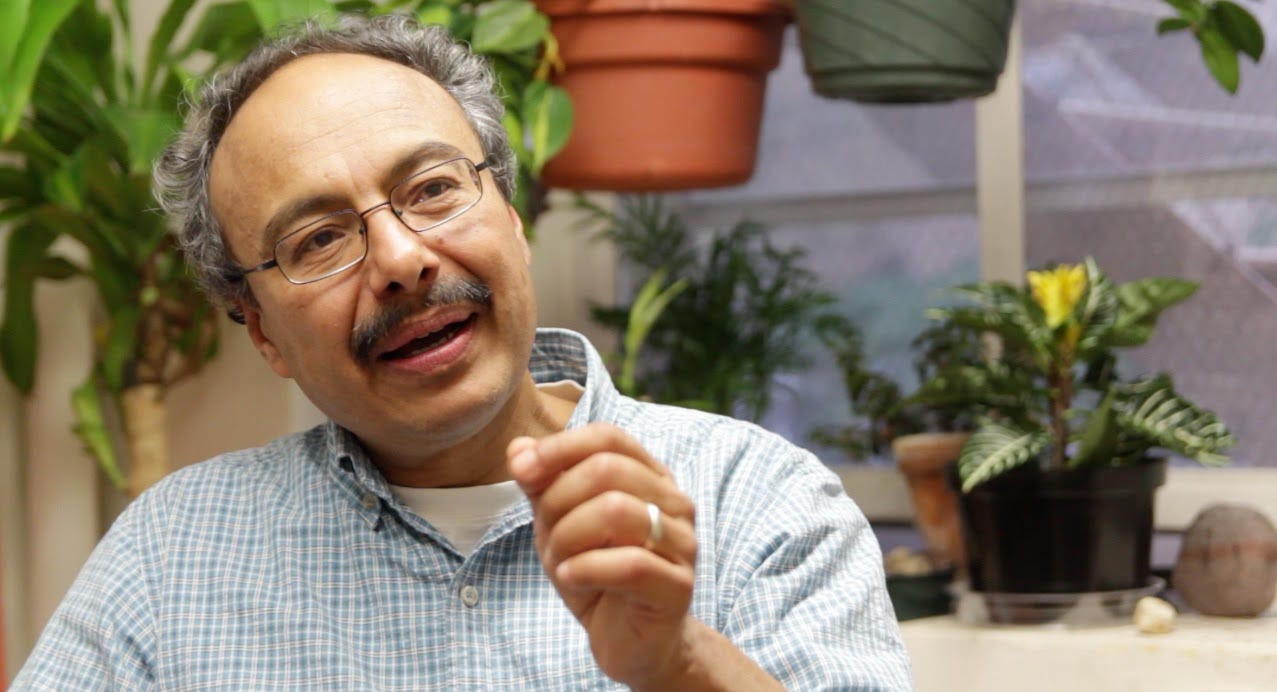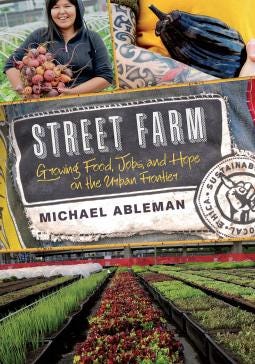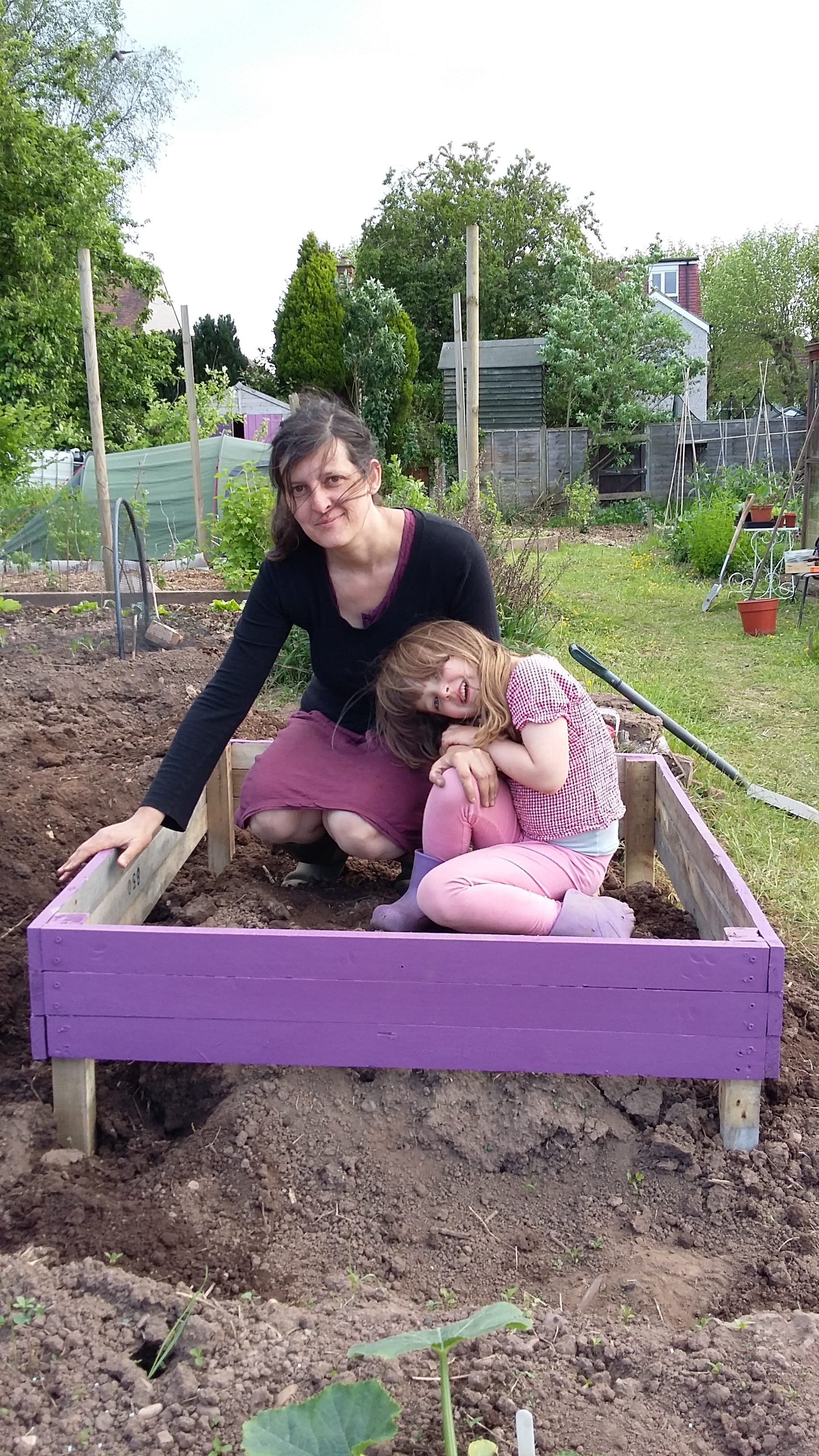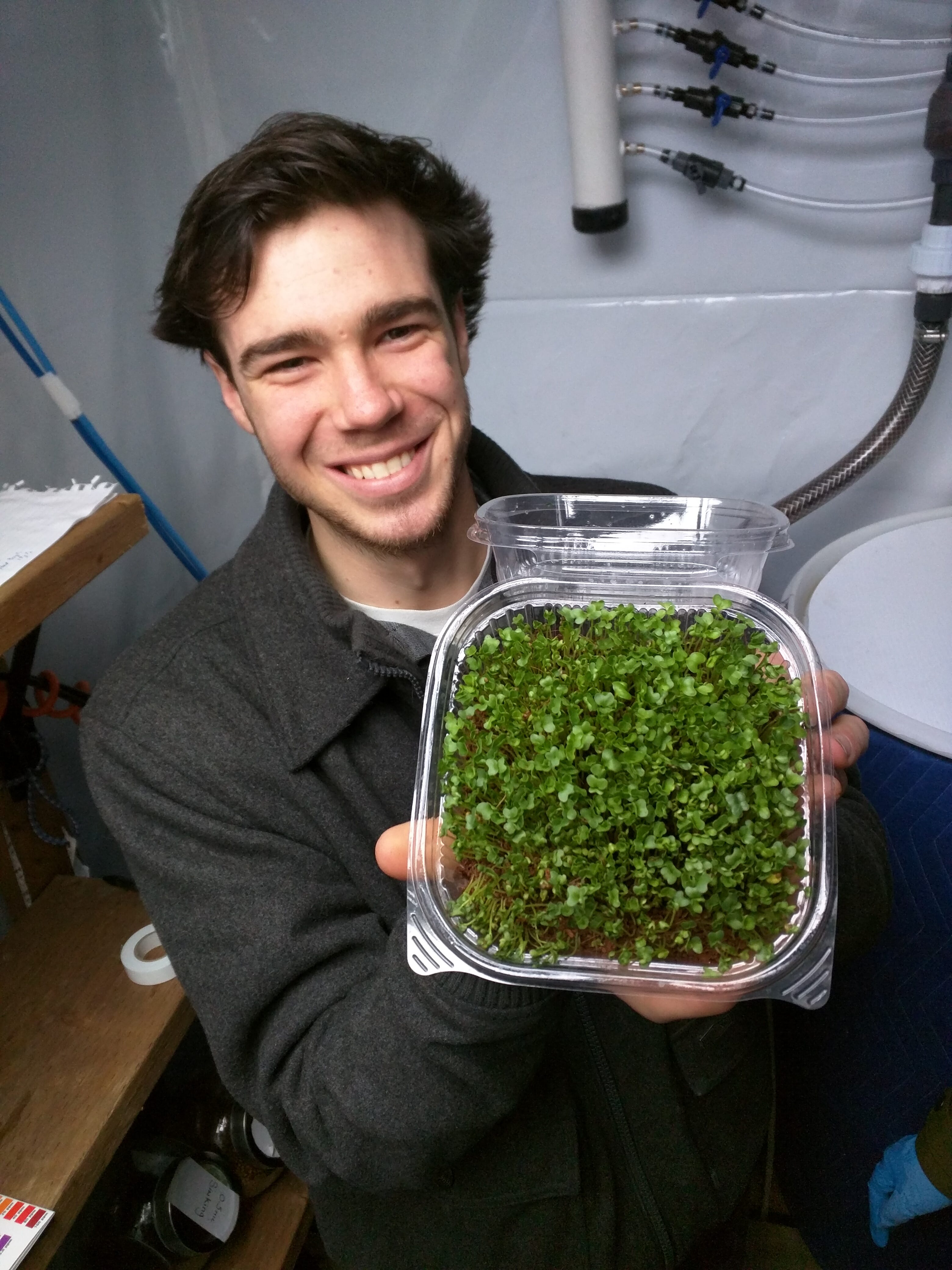Ed. note: This is a rewritten and updated version of an article that was published on Resilience.org in 2017.
When Socrates, Plato, and the gang hung out at the farmers market in downtown Athens, they argued a lot about the essence of beauty, truth, and justice.
They had no idea of the problems they would create for urban agriculture 2500 years later.
Ancient Greece, a major tributary to western culture, was obsessed with absolute and universal Truth — that’s Truth with a capital T and in the singular.
This singular (academics call it “essentialist”) legacy lives on in today’s thinking about food. Think of such commonly used expressions as food policy, food strategy, food culture, local food, sustainable food, alternative food, and urban agriculture. Not much pluralism, plurals or variation here!!
We betray the Greek origin of western styles of thinking every time we use the singular to discuss the opposite — the sheer abundance and bounty of foods and food choices that modern living and technologies offer.
So, for example, we have city discussions about the need for a city policy on urban agriculture, instead of city discussions about the need for city policies to support various forms of urban agricultures.
The ancient Greek philosophers, despite many wonderful ideas they developed, were hung up with locating the one and only inner essence of things — an abstraction that was independent of the ups and downs of momentary appearance.
They found messy realities too messy and left such messiness to slaves and women. That tradition is still alive and unwell, as the low wages and standing of agricultural and food preparation work shows. The jobs that pay well are jobs removed from messy realities.
Likewise, to this day, a narrow and absolutist mindset straitjackets our thinking about food policy in cities.

Alfonso Morales edits new book on many forms of city farms
To wit, the way cities agonize over a policy (note the singular) for urban agriculture (note the singular), rather than a suite of policies (note the plural) to help as many who are interested, for whatever reasons (note the plural), be they love or money, to eat foods (note the plural) they have grown or raised or foraged in varieties (note the plural) of spaces (note the plural) — from front yards, to back yards, to green roofs, to green walls, to balconies, to windowsills, to allotment gardens, to community gardens, to beehives, to butterfly gardens, to teaching and therapeutic gardens, to edible landscaping, to soil-based, hydroponic and aquaponic greenhouses, to vacant lots, to public orchards, to community composting centers, to greywater recycling for lawns and gardens, to formally-sited farms and meadows.
LET ME COUNT THE WAYS
There are so many opportunities, so many points on the urban agricultures spectrum, that we can’t even say “urban agriculture is what it is.”
That fact is that “urban agricultures are what they are,” and city governments in different areas should embrace many of them.
I’m going to review three books that provide three distinctive and dynamic takes on urban food production.
I begin with a collection, edited by Julie Dawson and Alfonso Morales, called Cities of Farmers: Urban Agricultural Practices and Processes.
 Horticulture expert Julie Dawson co-edited Cities of Farmers
Horticulture expert Julie Dawson co-edited Cities of Farmers
The two editors come from the state university in Madison, Wisconsin, where the late city planning authority, Jerry Kaufman, spread his protective wings around a new generation of urbanists who now teach and practice city food planning around the world. Before Kaufman, the conventional wisdom of city planners was that food was produced in rural areas and consumed in cities; cities should stick with making things that provided the “highest use” of expensive city land. This anthology, which breaks totally from that convention, is a worthy basket from the harvest Kaufman seeded. (I am as indebted to encouragement from Kaufman as any of his students.) Jerry Kaufman, the godfather of city food planning
Jerry Kaufman, the godfather of city food planning
I got to see this book before it was published, so I could write a back cover blurb drawing attention to its “down to earth quality” that can help city planners, health promoters, community developers and “all who love what a garden does for a day outdoors, a yard or parkette, a great meal, and quality time with others.”
The breakthrough of the book, in my view, is that it doesn’t ask the ancient and unanswerable philosophical question about “what is urban agriculture.” Instead, it asks the more pointed and fruitful question: what do urban agriculture projects do.
The book’s answers (note the plural) form the most comprehensive overview yet of how the “multi-functionality” of both agriculture and food can generate the many benefits that urban agricultures bestow on cities.
Producing food may well be the least accomplishment of urban agriculture, though that extra food can really make a difference for people on a low income. But the crop itself is only one contribution on a long list that includes enhanced public safety, community vitality and cohesion, neighborhood place-making, skill development, food literacy, garbage reduction (through composting) and green infrastructure.

down to earth look at urban ag
As Erin Silva and Anne Pfeiffer argue in their chapter on agroecology in cities, the sheer range of benefits bestowed by urban agricultures dwarfs the efficiency of any one particular contribution — be it food production or the development of community food literacy. This knocks standard economic analysts for a loop because the premise of this book is that the whole is greater than the part, and the efficiency comes out of the whole, not any one part. “Though food production remains a central focus for many operations,” they write, “ it is often a means to achieve other social benefits rather than the singular goal.”
As I used to put it during my working days for the City of Toronto, the success of all forms of food activities, including urban agricultures, rest on the economies of scope, not the economies of scale.
Therein lies the key to measuring true productivity. When we understand why that method of measuring progress in food matters, we will come to see the potential of a wide variety of ways to manage and incentivize food activities.
HOW DO YOU GET TO GARDEN AT CARNEGIE HALL? PRACTICE!!
Though I like all the chapters in the book, the one that knocks my socks off is by Nevin Cohen and Katinka Wijsman. It highlights the central role of food practices in a way that points to new ways of promoting food activities that go far beyond the boundaries of urban agriculture.

Nevin Cohen, co-author, practices looking like a gardener
This chapter is fundamental to anybody who wants to make the journey from food policy to implementation of new food practices.
Let me get to the nitty-gritty of practice. I did not grow up with a policy of not flossing my teeth after a meal. Nobody flossed when I was a child. I didn’t learn to flow or get into the habit of flossing until I was elderly and under threat of losing my teeth as a result of gum disease. That’s when I mastered the practice of automatically flossing. I didn’t change my policy. I don’t follow a new policy. I changed my practice. I have adopted a new practice.
It’s the same for people who practice anything — from medicine to yoga. We now need to normalize this approach to good food practices. As medicine, yoga, Cohen, and Wijsman make clear, a policy is the servant of practice, not the other way around.
Their chapter reviews how New Yorkers went from policy advocacy to practices that implemented community gardens. They not only normalized community gardens on the most expensive real estate in the world. They incorporated forms of urban agriculture into the basic infrastructures of a city — from green roofs and walls to green paths and street greenings that manage stormwater.
The gardening version of pilgrims’ progress in New York City has been as much about advancing practices as policies, Cohen and Widjsman argue.
Indeed, practices, not policies, need to become the crux of the matter for all people who seek meaningful food system changes.
We have come full circle from Plato and the ancient Greeks, who saw theory as the exemplar of purity, not defiled by the shadows in the caves that people lived and worked in.
This is why we now need to refer to groups of people who get the new paradigm of meaningful change as “communities of practice.”
Developing such communities is the way we build vehicles for food system transformation, just as people who practice yoga or medicine or meditation work their changes.
When you have finished this chapter, you will be mentally prepared for the latest from one of the master practitioners of organic food production.
ABLEMAN’S ABILITY
Michael Ableman is one of the preeminent growers, photographers, speakers, writers, and entrepreneurs produced by global organic movements. He was able to bring all his mature skills and practices to the most delicate project of a busy lifetime — cultivating the skills and practices of 25 employees from Vancouver’s notoriously drug-ridden Downtown East End to the point where they tended five acres on four beautiful and productive food gardens.
Urban agricultures don’t get much grittier than this. Ableman’s book, Street Farm: Growing Food, Jobs, and Hope on the Urban Frontier, tells the story.

Street Farm goes beyond-down-to-earth; it’s down to the pavement.
There was no utopian vision — it takes a practiced hand to know to steer clear of that — but Ableman and his crew “wanted the world to know that people from this neighborhood, those who were viewed as low-life losers, could create something beautiful and productive; that they could eat from it, feed others, and get a paycheck from its abundance; and that it could sustain itself for more than a few days or weeks or months or years.”
If urban agricultures can accomplish something akin to that, city gardens can produce something every bit as essential as food. This is what people-centered food policy is about.
Devoted organic grower and foodie that he is, Ableman appreciates the people-centeredness of this urban agriculture project. Employing and enabling neighborhood members is the mission of the street farm, he writes. He cites the Japanese farm philosopher Masanobu Fukuoka, who insisted the “ultimate goal of farming is not the growing of crops, but the cultivation of human beings.”
Ableman came to regard his fellow workers as “farmily.” That does put urban agriculture in context and explains why land-use policy for urban agriculture deserves to be classified as among the “highest uses” of urban land — in stark contrast to conventional planning, which regards agriculture as a low-end use of land.
Ableman also understands that urban agriculture is not just rural agriculture in a city. It sometimes has to be adapted in dramatic ways. He came to understand, for example, that a paved parking lot was an ideal foundation on which to build, and that the best way to grow was in some 5000 wooden and plastic bins (almost 10,000 at the time of this writing), which can be moved whenever a lease or a welcome run out.

Does Ableman see urban ag as another way to bring art to the people?
Ableman also understands the centrality of partnerships and of champions on city staff to his success. They are the city farmer’s environment, as important and immediate as Nature is to the rural farmer. At one point, Ableman argues that the crisis of global industrial agriculture is, above all, “a crisis of participation” — which distances people from their food as much as the 5000-mile trip that Asian rice takes to a plate on the eastern seaboard of the Americas.
WHAT HUMANS HAVE IN COMMONS
Ableman’s understanding of the centrality of engaging the people side of food production (should we call it human-centered food policy?) is the segway to the third body of work considered in this newsletter on urban agricultures — the work of Chiara Tornaghi at Coventry University in England.
As I read her articles, Tornaghi is so bold as to put the psychic needs of our deeply-rooted human spirit on par with deeply human physical needs for food. In this light, citizen access to urban food production is essential spiritually, not just biologically. Only such a deep understanding of the need to engage with and participate in food production could account for her proposal that access to food production opportunities be classified as part of a citizen’s inborn and inherent “right to the city.”

gardening activist Chiara Tornaghi and her assistant
Tornaghi’s work is accessible in a variety of places — including one article on how to set up an urban ag project, and one piece on the critical geography of urban ag, and one study on urban ag and the politics of empowerment, and one report on gardening activism, as well as a publication on European urban agriculture.
She’s pretty much out there, with phrases such as “insurgent urbanism” and “politics of engagement, capability, and empowerment,” along with references to the commons, metabolism and other clues that Tornaghi has spent as much time in obscure sections of libraries, as in gardens.
At the very least, she is refreshing. People concerned about the runaway rates of mental ill-health among young people cannot ignore what she has to say about addressing human needs to work directly in nature — and thereby counterbalance the highly built, urbanized, synthetic, abstracted, impersonal, mediated and corporate-controlled environment of dense cities.
In my view, this mental health and well-being perspective is the most urgent and compelling reason for city planners and managers to embrace the rise of urban agricultures.
I don’t want to gild the lily of what Tornaghi has to say. But her wording reveals a major change in radical thinking.
Not too long ago, direct action meant a demonstration where protesters “took power into their own hands” by demanding someone in government take action.
By contrast, Tornaghi’s is a direct action call to meet with your neighbors, find a place to stand, dig in, and get your hands in the dirt. It deals with justice not just as a distributive matter — how to divvy up the harvest so the one percent don’t get almost all of it and the poor get little. Justice is also a capability matter: the right of people to develop their own capacities, and not have to settle for a consuming life that renders us spectators of our own lives.
WE ARE WHAT WE GROW

Steven Bourne of Toronto’s Ripple Farms finds himself and a job
You shouldn’t have to leave the city to get in touch with your deeper self.
Tornaghi’s is a shout-out to go beyond the civic benefits that urban agriculture provides a city to the human benefits food production bestows on that undomesticated “gardener” and “forager” part of our inner being, brain, mind, and soul. If that is not well, then life in cities cannot be good.
Although there is huge wisdom in the clichéd phrase about “we are what we eat,” we now need to recognize that we are just as much what we forage and grow and make. We are also what we grow and produce. We evolved to eat in certain ways, and we also evolved to feed ourselves. The two are inseparable. The two were severed by industrial agriculture, which turned most eaters into consumers. Now we need to heal that breach.
Urban agriculture is the ultimate offering that food makes to people in cities — not what has long been considered the punishment of hard labor, meted out to humans as penalty for their sins, but what is really food’s greatest gift — the opportunity to engage and participate in the labor as well as the joys of meaningful work.
SALAD DAYS OF CITY FARMING
I’m looking for a fourth book to round this picture out, a book that captures the energy of a new generation of city farmers who are growing salad greens in freight containers repurposed as greenhouses. They can fit into any number of small places and provide conditions for growing fish (aquaponics) and greens (hydroponics), together or separately.

Brandon Hebor shows off his sprouts
Like Steve Bourne and Brandon Hebor of Ripple Farms in Toronto, these ecopreneurs repurpose old freight containers, rescuing them from landfill, outfit them with grow lights and containers for fish and plants, and locate them in an out-of-the-way but accessible space (in this case, just by the parking lot of the popular Brickworks farmers market) where the 100-yard diet applies to producers and shoppers.
They can grow microgreens and fish, and they can grow micropreneur jobs by the tens of thousands — with a potential for each micro-green micro-business to supply one farmers market, or one food truck, or one school meal program, with fresh-grown greens and fish from the neighborhood.
Talk about a disruptive business model that will affect the way people can access ultra-local fresh greens and fish for 12 months of the year!!!!! They’re so close to their customers, they don’t even need to call Uber for deliveries!
Indoor ag is just one of the many ways that the many forms of urban agriculture can benefit cities.
There are many more urban agricultures to put in the bucket list. I’m especially looking forward to ways of seeing urban ag as green infrastructure — where the food production and ecosystem functions of gardens are woven together. That, in my opinion, is the wave of the future. I’ll explore that in a separate article.
(Longtime manager of the Toronto Food Policy Council, Wayne Roberts produces a free newsletter on skills needed to grow city-based food movements and community businesses. To sign up, go to https://wayneroberts.us12.list-manage.com/subscribe?u=ab7cd2414816e2a28f3b35792&id=1373397df7
Feature image via Wikimedia https://en.wikipedia.org/wiki/File:%22The_School_of_Athens%22_by_Raffaello_Sanzio_da_Urbino.jpg





